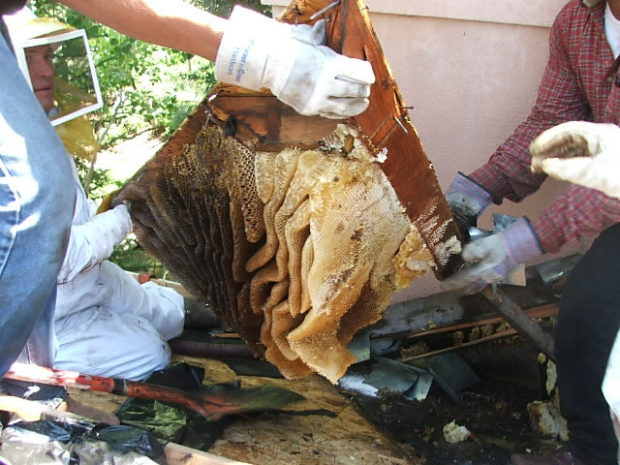If there is one thing the Bee Movie managed to achieve, was to taint humanity and portray man as a ruthless bee-killer and a shameless honey thief. With a successful lawsuit against humankind, a bumblebee animated character managed to a ruling in favor of bees’ the right to life and the right to store all the honey produced. However, away from the world of fiction, we may need to get rid of bees when they invade our homes or our personal space. Here are five tips to help you during a bee invasion.

1.Protect yourself
When dealing with bees it’s better to be protected than a naked hero. When trying to kill bees, they do not die instantly; a bee will always sting before it dies. Hence, always wear protective gear when getting rid of bees. When spraying a large colony, the outer bees will be hit by the spray, whereas those underneath will get agitated and are likely to sting in retaliation.
2.So, where are the bees nests?
If you were to hide a fortune, where would it be? A secret place! Arguably, insects living in your house build their nests in attics, walls, roof beams – so that you cannot easily find them. The nests are cleverly tucked away in these hard-to-destroy places, making it undetectable when an infestation happens. During summer, bees like to set their nests near the pool or under the pool deck.
3.Identify a bee infestation
To spot the bees, watch out for these signs:
- Excessive bees in your garden or abnormal or high-level bee activity around the house.
- Dead bees in your home, garden office or car.
- Buzzing sound in between your walls.
- Unpleasant odors- decomposing honey and honeycombs leave unpleasant smells around the house.
- Bee swarming occurs with bees living in robust populations.
- If the bees hover around your home frequently, the bee infestation may be chronic.
4.Enlist the services of a beekeeper or exterminator.
Managing bees without killing them is the safest measure to ensure sustainability of bee farming. Most beekeepers would be happy to remove the bees at a little or no cost. If the nest is easily accessible, beekeepers may pay you to remove bee nests. Bee exterminators will explore all the delicate methods of removing bees without poisoning or harming the house occupants
5.Identify the types of bees and possible eradication methods
It’s good to know the types of bees so that to find the correct eradication method. Bees are found two common places in our homes.
a.In the ground
Some types of bees build nests underground. Ground bees are a non-aggressive lot but are quite defensive. You can tarp the nest at night when most bees are in the nest.
- Use bricks or stones placed at all sides of the tarp
- Use soapy boiling mint water: This method kills all the bees and eggs in the hive.
- Chemicals: Ground bees can be felled by insecticides. D-Force HPX paralyses the bees by attacking the nervous system. ( Deltamethrin, the active ingredient in D-force is a synthetic pyrethrum)
b.In our homes
Many bee species live in our homes. When bees crash at your place and don’t cost-share the rent, call at the exterminator on these little bugs.
- If you choose pesticides, most bees will die, but it is not worth considering the risk you are exposed to. Pesticides kills bees only leaving eggs that later hatch. Later on, the exterminator will be grinning at your doorstep waiting to finish the job you failed. The exterminator does a clean job: get rids of dead bees, beeswax and honeycombs.
- Vacuum can remove bees safely without any harm. ( not always advisable)
- Natural ways: Use natural remedies like vinegar or garlic sprays to get rid of bees.
- Zappers
The most successful bee removal is hanging bug zappers outside the house. Fragrant zappers lure many bees and electrocute the bees that touch the zapper.
- Set traps
If the above methods do not work, become a ninja and set bee traps around your home. Other than being time consuming, bee traps are not be a quick fix. Most traps can take up to several months to capture most bees.



